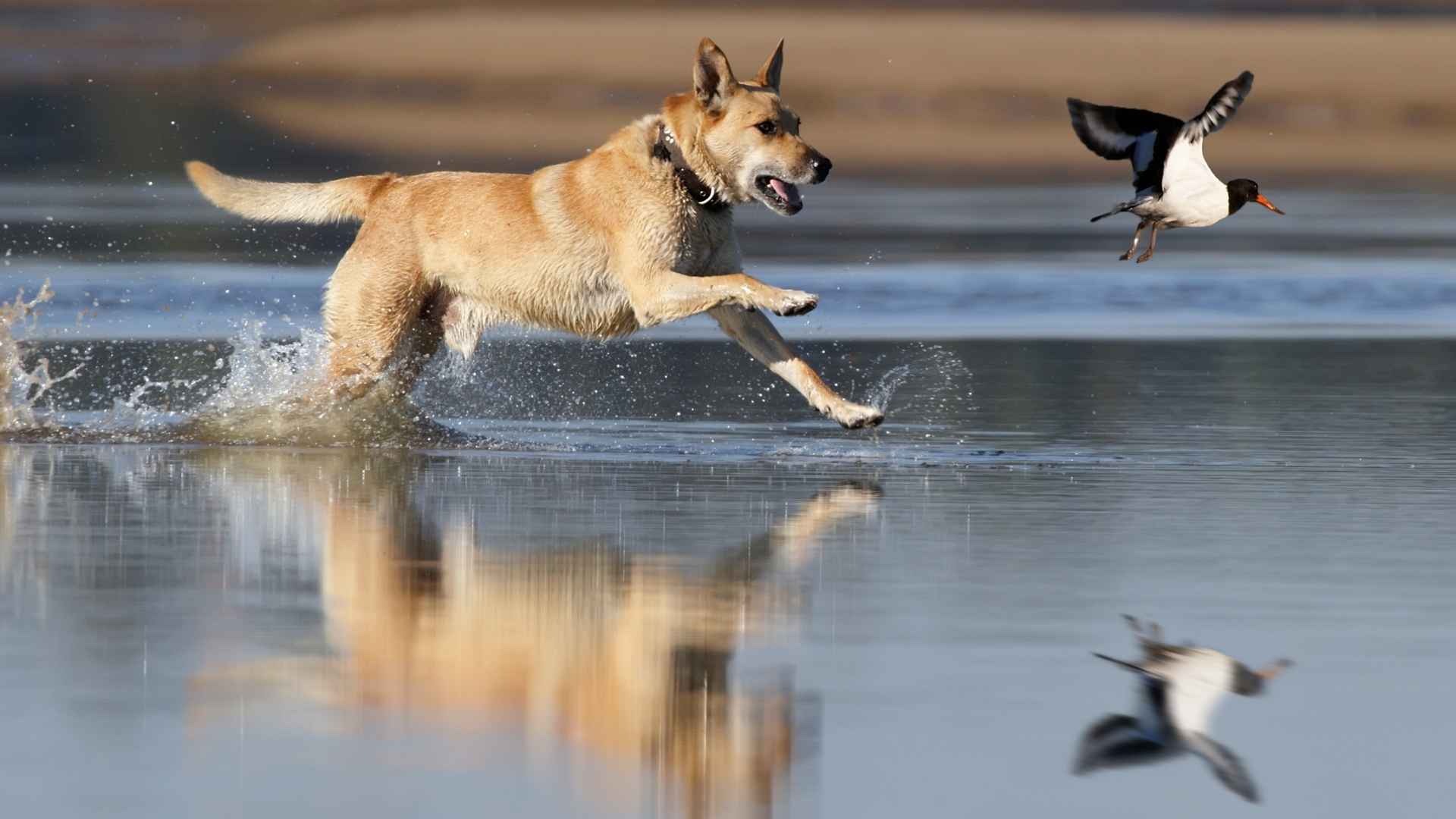Some dogs were born to chase tennis balls, but others were bred for a higher calling—retrieving birds with remarkable precision. For centuries, hunters have relied on specialized dog breeds to locate, flush out, and retrieve game, making their jobs easier and hunts more efficient. Among these skilled workers are the dogs capable of retrieving multiple birds in one outing, a testament to their intelligence, stamina, and unwavering dedication.
These dogs are more than just hunting partners—they’re loyal companions who thrive on having a job to do. Whether working in the fields or wading through marshes, their keen noses, strong jaws, and boundless energy make them indispensable for both upland and waterfowl hunting. Many have evolved from their working roots into beloved family pets, still holding onto the instincts that made them legendary in the field.
If you’ve ever marveled at the sight of a dog bounding back with a bird—only to dart off again for the next—this guide introduces the extraordinary breeds that make retrieving multiple birds in a single hunt look effortless.
7 Dog Breeds That Retrieve Multiple Birds In One Hunt
1. Vizsla
The Vizsla, also known as the Hungarian Pointer, is a sleek, hunting dog originally developed in medieval Hungary. The AKC notes that the Vizsla is instantly identifiable by its smooth, golden-rust–colored coat.
Bred for both pointing and retrieving, Vizslas were once favored by nobility for their skill in falconry and upland game hunting. They stand about 21–24 inches tall, weigh between 44–60 pounds, and belong to the Sporting Group.
Agile, athletic, and enthusiastic, they thrive in active environments and enjoy close companionship. This medium-sized breed is known for its affectionate personality and remarkable field abilities. The Vizsla has a life expectancy of 12 to 14 years and is best suited for experienced handlers who can match their stamina and drive.
Unique Traits
Vizslas are famously called “Velcro dogs” because of their deep attachment to their owners—they hate being left out. In the field, their keen nose, natural pointing ability, and strong retrieving instincts make them standout performers.
Their energy and enthusiasm allow them to track, flush, and retrieve multiple birds in a single outing. They are also easily trainable and responsive to direction, excelling at both land and water work. Their short, rust-colored coat requires minimal grooming and helps them move efficiently in dense cover.
Did you know? The name “Vizsla” literally means “tracker” in Hungarian—a nod to their centuries-old purpose
2. English Springer Spaniel
The English Springer Spaniel is a classic gundog with roots in 19th-century England, where it was developed to flush and retrieve game birds. Often weighing between 40–50 pounds and standing 19–20 inches tall, this medium-sized sporting dog is admired for its stamina, intelligence, and eagerness to work. WebMD explains that males tend to be a bit bigger than females, both in height and overall weight.
Its moderately long, feathery coat—usually in black and white or liver and white—requires regular grooming, but its beauty is undeniable. Bred for versatility, Springers excel both in upland hunting and as devoted family pets, seamlessly balancing field prowess with an affectionate nature.
Unique Traits
These versatile dogs are prized for their “windshield-wiper” hunting style, energetically sweeping back and forth across fields while staying within gun range. They have remarkable noses and are relentless in thick cover, making them superb for pheasant hunting and other upland game.
Their trainable, people-pleasing demeanor makes them ideal for hunters seeking a cooperative partner who adapts quickly to instructions.
Did you know? Spaniels from the same litters were once separated into “cockers” and “springers” based on size, giving this breed its name as the one that would “spring” game from hiding for hunters.
3. Labrador Retriever
The Labrador Retriever, often simply called the “Lab,” is one of the most iconic sporting dogs in the world. Originating in Newfoundland and later refined in England, these dogs were bred for retrieving waterfowl and upland birds in challenging environments. They are one of the most popular dog breeds.
Labs are sturdy, medium-to-large dogs standing 21.5 to 24.5 inches tall and weighing between 55 and 80 pounds. Known for their cheerful demeanor and eagerness to work, they have become not only outstanding hunting partners but also beloved family pets, service dogs, and even search-and-rescue heroes.
Their dense, water-repellent coat—most often black, yellow, or chocolate—combined with their famously otter-like tail, makes them perfectly designed for long days in the field or water. PetMD highlights that Labradors are deeply affectionate with people—including strangers—and typically get along wonderfully with other dogs as well as children.
Unique Traits
Labradors are natural retrievers with an unmatched ability to collect multiple birds in one hunt. Their intelligence, trainability, and soft mouth mean they can bring back game without causing damage—an essential trait for hunters. They thrive on activity, excelling in everything from hunting trials to dock diving.
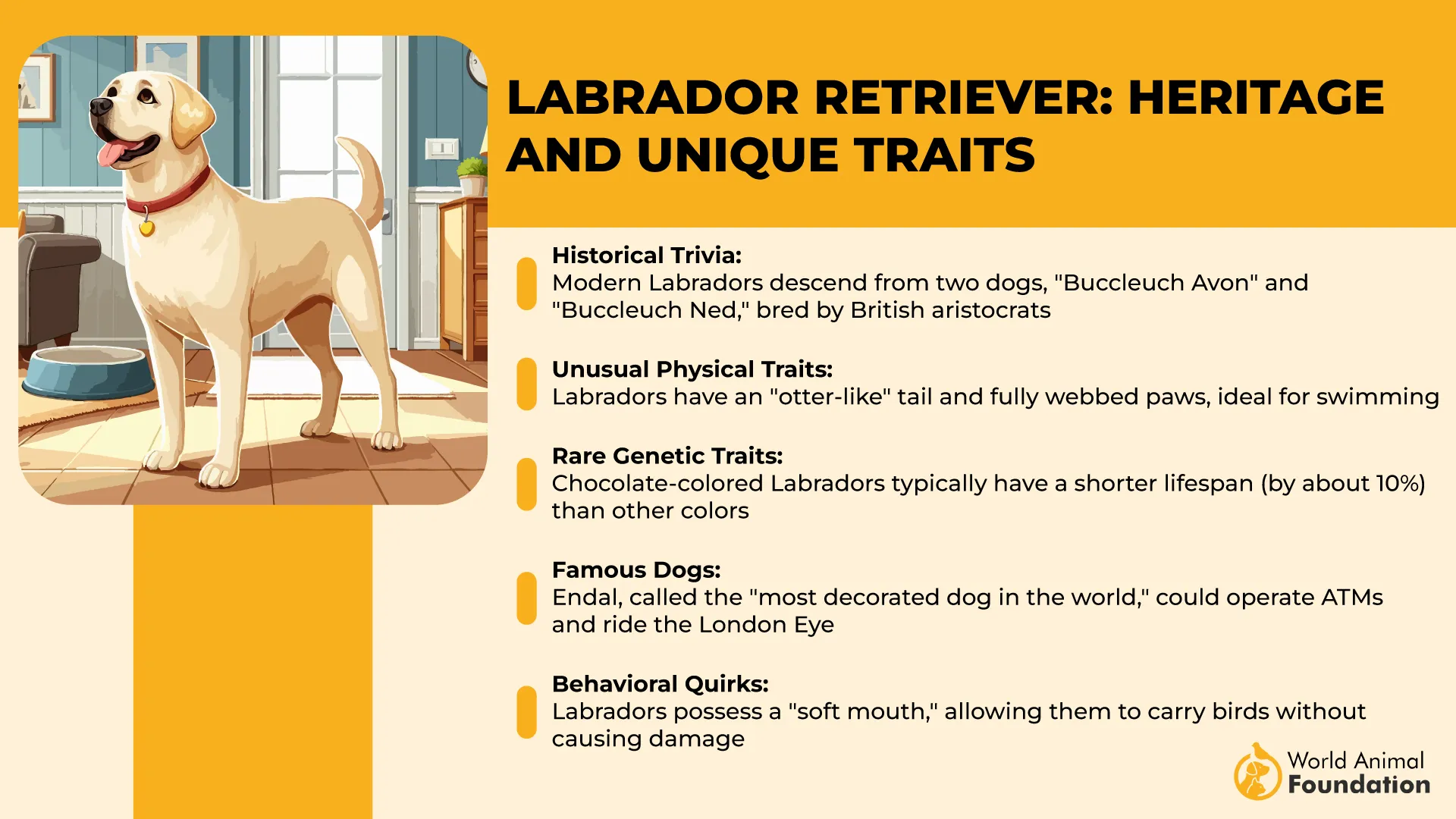
Did you know? In 2001, a yellow Lab named Endal became famous for saving his disabled owner’s life, proving that Labs excel at far more than just hunting.
4. Nova Scotia Duck Tolling Retriever

The Nova Scotia Duck Tolling Retriever, affectionately known as the Toller, is the smallest member of the retriever family but one of the most unique. Originating in Nova Scotia, Canada, during the early 1800s, this rare breed was developed to lure ducks into shooting range by frolicking along shorelines — a tactic that earned it the nickname “Decoy Dog.”
Medium-sized and agile, Tollers typically stand 17–21 inches tall and weigh 35–50 pounds, with a life span of 11–14 years. Their reddish coat with white markings and bushy tails not only makes them strikingly beautiful but also functional for their tolling work.
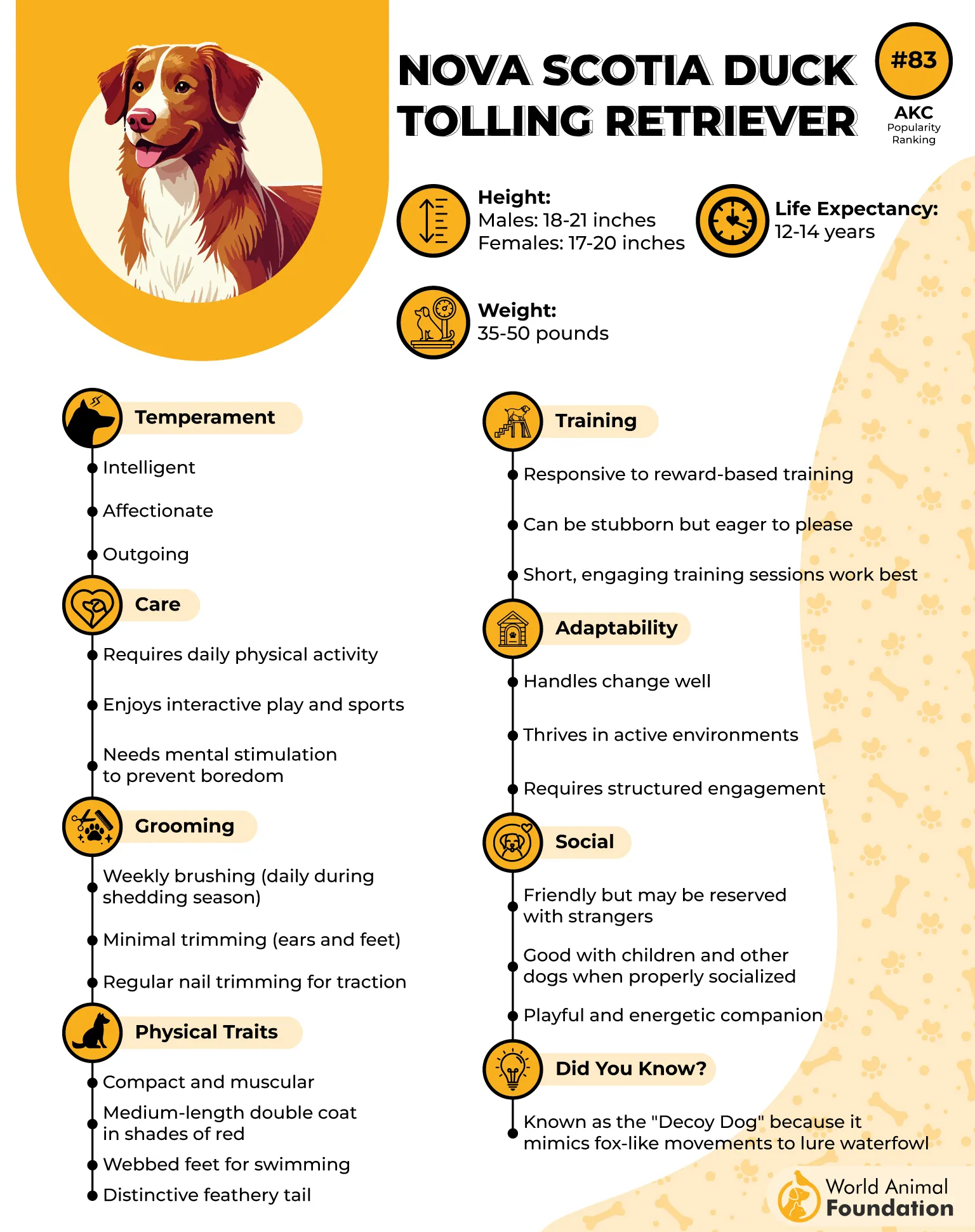
Unique Traits
Tollers have a water-repellent double coat and webbed feet, making them exceptional swimmers. Their playful, back-and-forth movements naturally attract waterfowl, and once the birds are within range, Tollers switch into retriever mode, collecting multiple birds with ease.
While affectionate and eager to please, they have a strong prey drive and may require early socialization to coexist with smaller animals.
Did you know? This breed holds the record for having the longest name in the AKC stud book: Nova Scotia Duck Tolling Retriever — longer even than the Petit Basset Griffon Vendéen
5. Golden Retriever
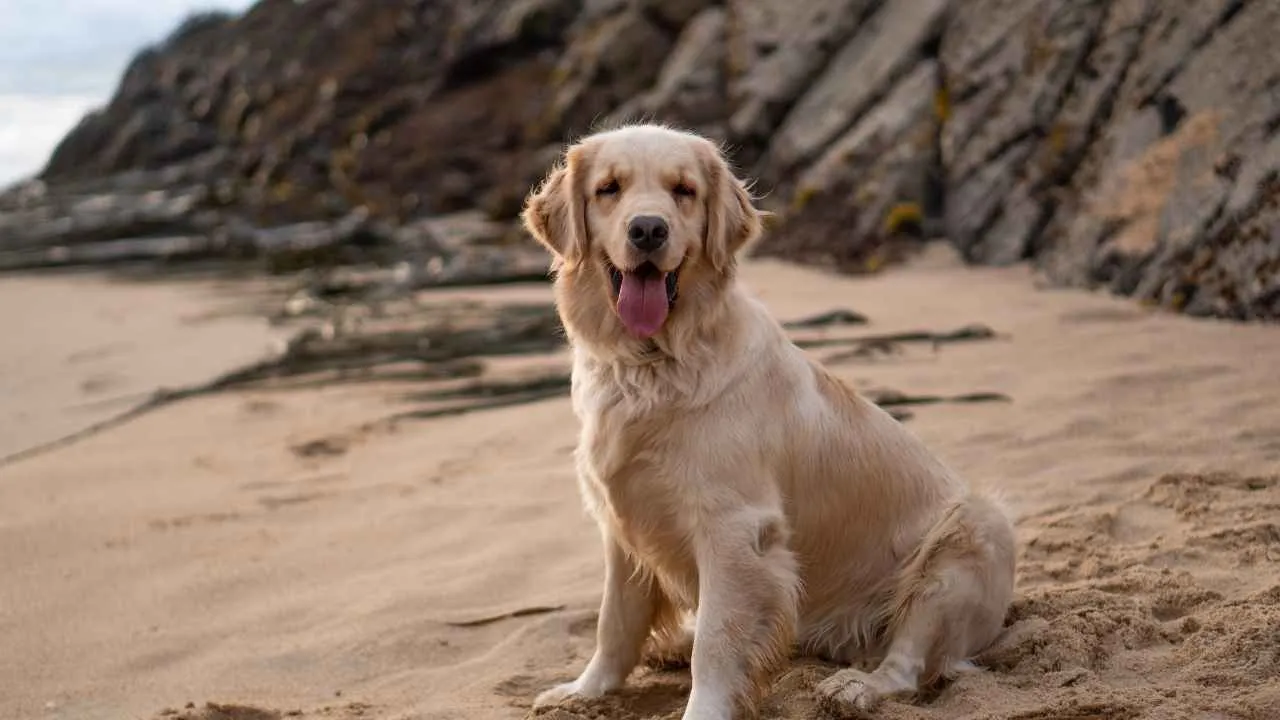
The Golden Retriever, one of the world’s most beloved breeds, is celebrated not only as a family favorite but also for its exceptional skill as a hunting companion. Originating in Scotland in the 19th century, these dogs were bred to retrieve game birds on both land and water, thanks to their strong build, keen nose, and remarkable swimming ability.
Males typically stand 23 to 24 inches tall and weigh 65 to 75 pounds, while females are slightly smaller at 21.5 to 22.5 inches and 55 to 65 pounds. Known for their friendly, eager-to-please nature, Goldens are part of the Sporting Group and live an average of 10 to 12 years.

Unique Traits
Golden Retrievers stand out for their versatility—they’re just as comfortable retrieving multiple birds in one hunt as they are snuggling by the fire after a long day.
Their dense, water-repellent double coat helps them perform in chilly marshes and upland fields, while their intelligence and trainability make them naturals at learning complex hunting commands.
Did you know? Every Golden Retriever can be traced back to a litter born in 1868 at Scotland’s Guisachan House, the foundation of the breed’s enduring legacy.
6. German Shorthaired Pointer

The German Shorthaired Pointer (GSP) is one of the most versatile hunting dogs in the world, excelling in pointing, retrieving, and tracking game on both land and water. Originating in Germany in the late 1800s, the breed was developed to be an all-purpose gun dog capable of working alongside hunters for long, demanding days in the field.
Standing 21–25 inches tall and weighing 45–70 pounds, GSPs are lean, muscular, and athletic, built for endurance and speed. Their short, dense coat is typically liver or liver-and-white and naturally water-repellent, making them ideal for upland and waterfowl hunting. With a lifespan of around 12–14 years, they combine working drive with loyalty, often bonding deeply with their families.
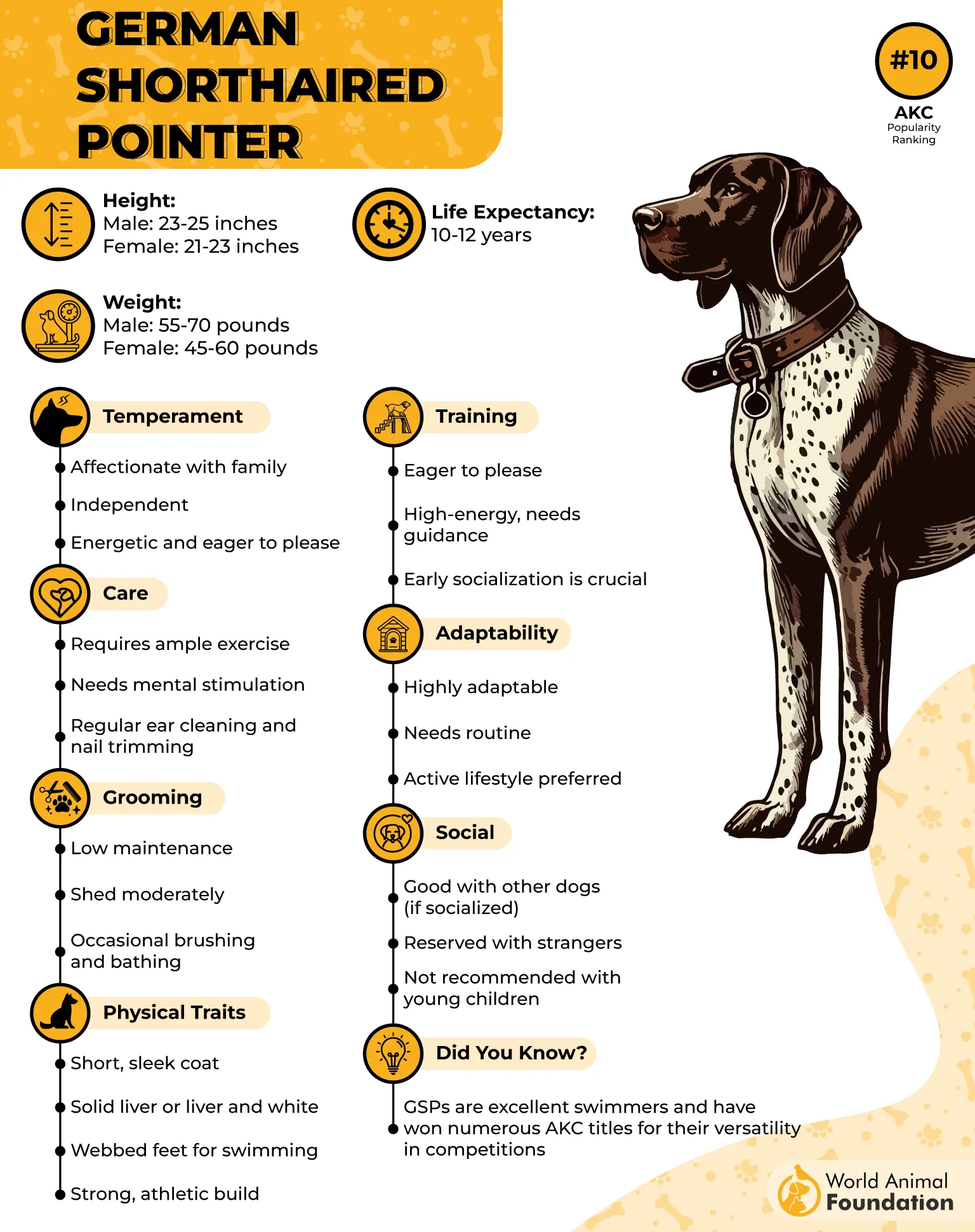
Unique Traits
These energetic dogs are known for their remarkable adaptability, able to transition seamlessly between retrieving ducks from icy waters and pointing quail in open fields.
Their keen intelligence and eagerness to learn make them highly trainable, but their boundless energy requires regular exercise and mental stimulation to prevent boredom. Unlike many hunting breeds, GSPs thrive as affectionate companions, offering both a strong work ethic and a loving temperament.
Fun Fact: GSPs are so versatile that they can hunt dozens of species, from pheasants to rabbits, often completing multiple retrieves in a single outing without losing focus.
7. Irish Setter
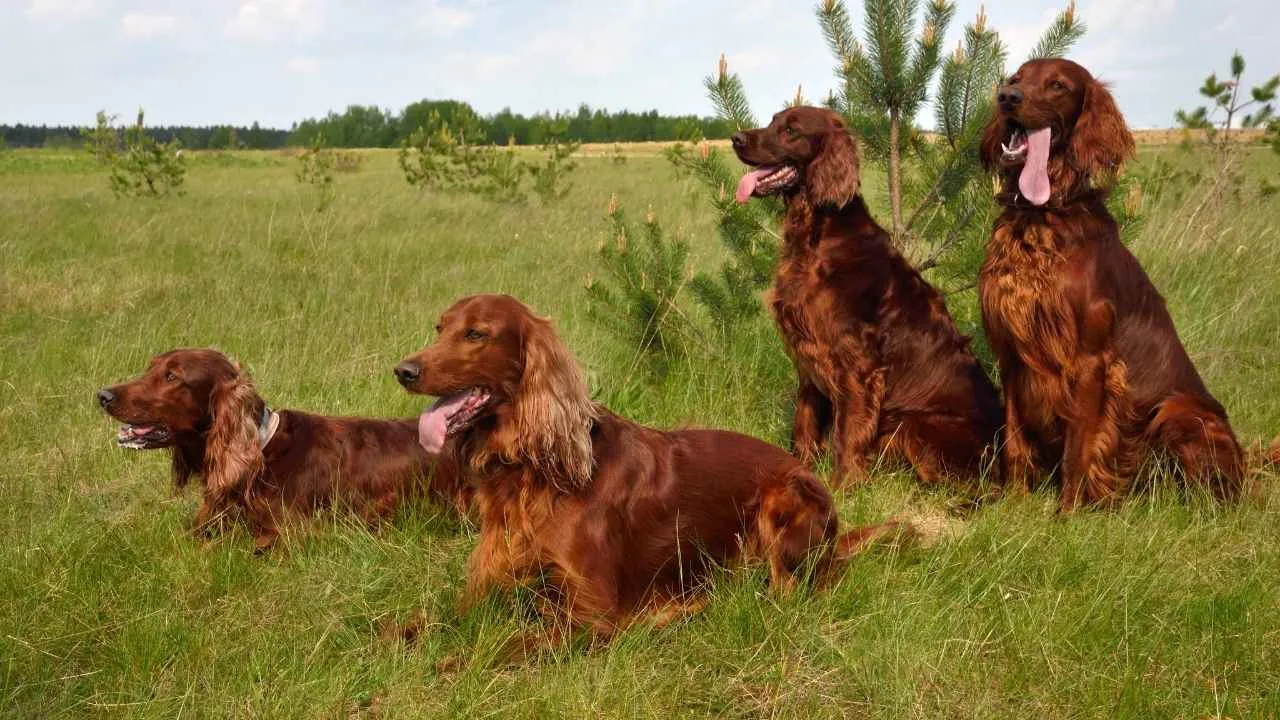
The Irish Setter, often called the “Red Setter,” is a striking sporting dog developed in Ireland during the 18th century. Originally bred from spaniels, pointers, and Gordon Setters, these dogs were designed for locating and retrieving game birds, excelling as both pointing and flushing dogs.
Standing 25 to 27 inches tall and weighing around 60 to 70 pounds, they are known for their athletic build, graceful movement, and long, flowing coats.
Their mahogany-red fur and elegant frame have made them not only skilled hunters but also beloved companions in family homes. Irish Setters typically live 12 to 15 years, offering years of loyalty and vibrant energy.
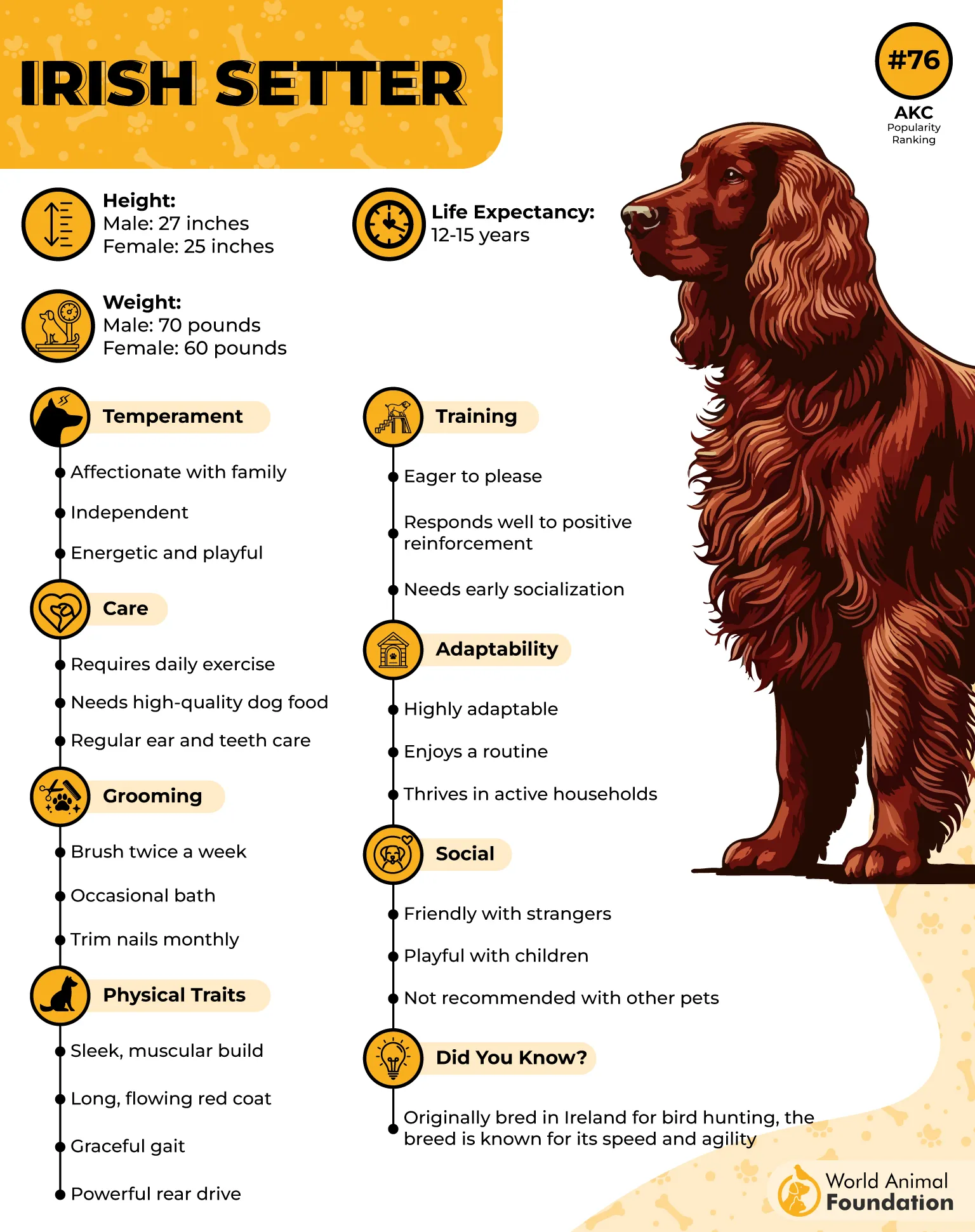
Unique Traits
Irish Setters are celebrated for their boundless enthusiasm and playful nature, making them excellent partners in the field and at home. Their friendly temperament helps them connect easily with hunters, families, and even strangers, while their intelligence and eagerness to please make training rewarding.
They thrive on activity and excel in upland hunting, where their keen nose and stamina allow them to locate and retrieve multiple birds during a single hunt.
Did you know? This hunting dog breed became so admired for their beauty that they were featured in countless ads and films, further cementing their reputation as one of the most iconic gundog breeds.
Conclusion
When it comes to the skill and stamina needed to retrieve multiple birds in one hunt, the right bird dogs make all the difference. These dedicated bird dog breeds excel in fields, marshes, and the grouse woods, proving their worth with every flawless retrieve. From classic pointing breeds that hold steady on a bird to tireless retrievers who bring game back again and again, they showcase centuries of careful breeding and fieldwork refinement.
The American Kennel Club recognizes remarkable affectionate dogs like the Chesapeake Bay Retriever, Curly Coated Retriever, and Flat Coated Retriever, all known for their drive and versatility. Others, such as the German Wirehaired Pointer and Brittany Spaniel, shine in upland bird hunting, effortlessly shifting between roles as a pointing dog and retriever.
Whether in flooded fields or the crisp autumn woods, these breeds embody the grit, grace, and determination that define the ultimate hunting companion—dogs capable of retrieving not just one, but multiple birds with unwavering enthusiasm.


